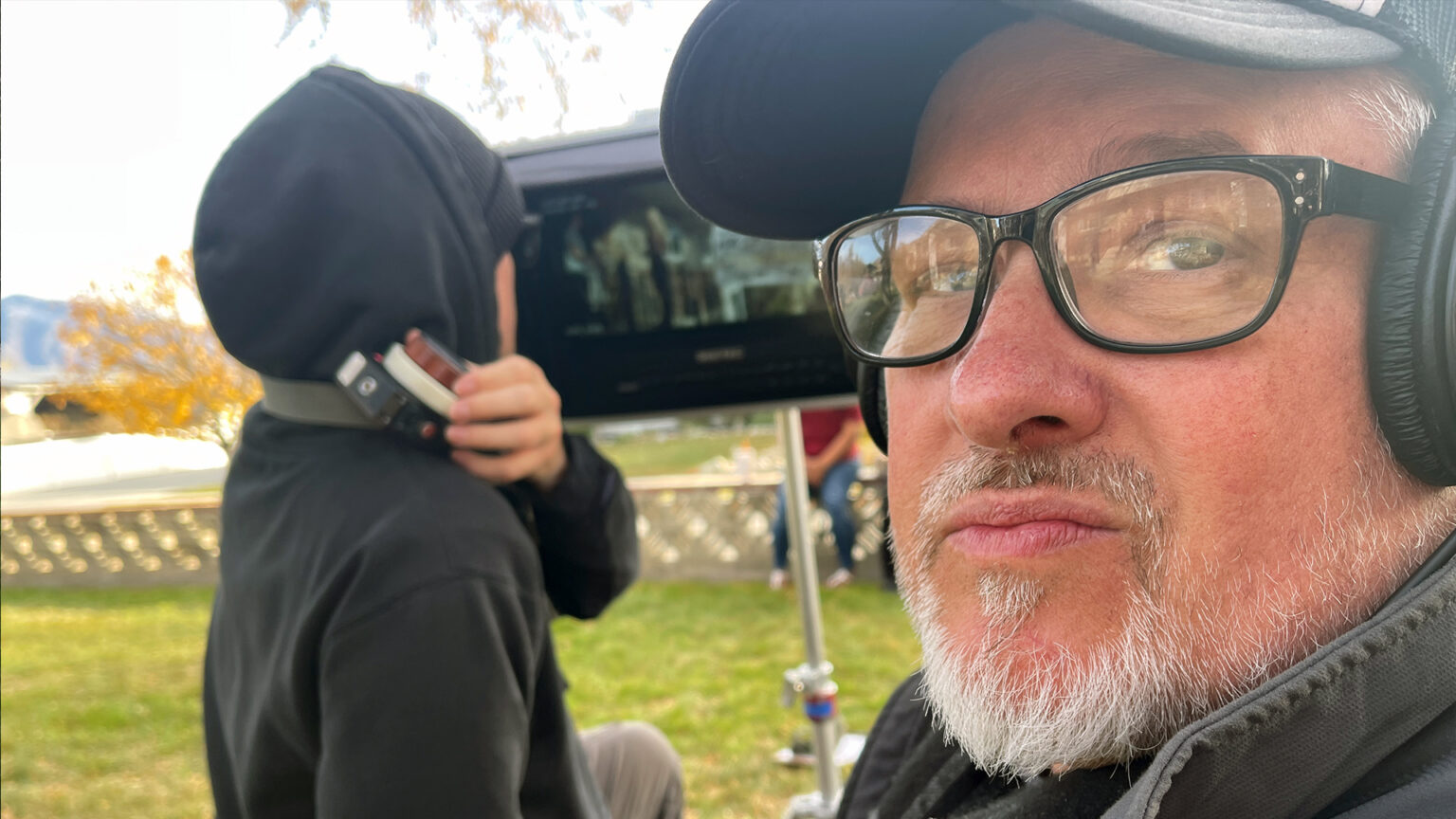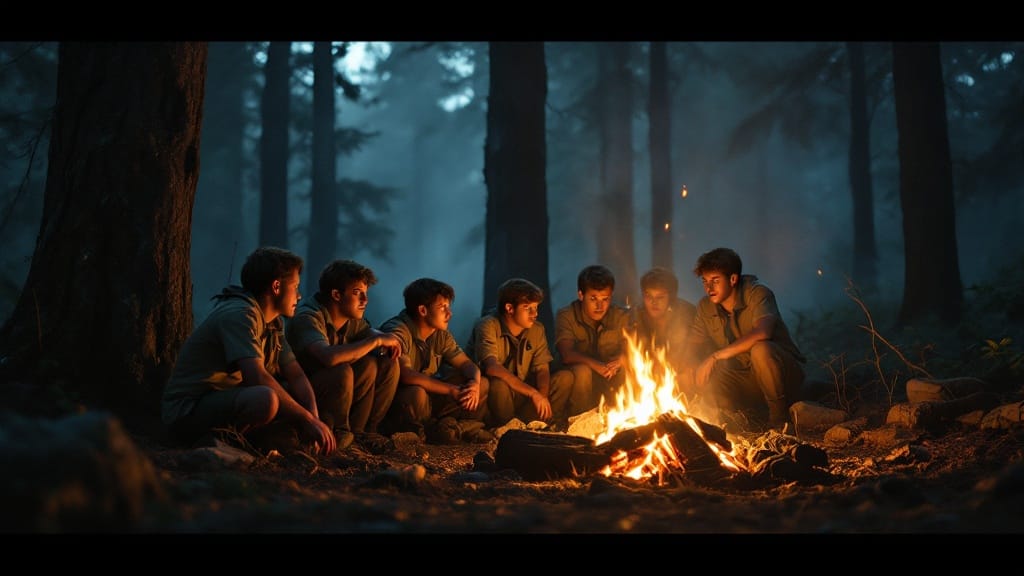Drama
On the set of “Lady in the Locket”

As I pulled up to the coordinates on my GPS in West Jordan Utah, a film crew was set up outside a small house at the dead end of a street.
“Roll Sound. Roll Camera,” came the call from set.
Quietly I made my way up the driveway to not draw attention from the actors performances. I had arrive on set at what appeared to be the end scene of “Lady in the Locket” with Scarlett Diamond, John Fricke and Kylie Rohead on the front porch.
After a few minutes, the scene was completed and the lunch was called. After a quick lunch I sat down with Rob Diamond on the same porch that they and previously finished filming to discuss his current film “Lady in the Locket”.
“Lady in the Locket is about a family secret that needs to come to light,” says Diamond. “She’s held on to the secret for selfless reasons. It has a lot of healing aspects for the little girl and her dad who lost their wife and mother.”
This film was an evolution in Rob Diamonds body of work. Diamond has a talent to write, direct and produce his own films. He also finds time to teach actors and run an acting agency. But this time he commissioned Kerry Stewart to write “Lady in the Locket” rather than write it himself.
“She’s worked with me diligently for a couple of years and is a fantastic writer. I told her what type of story I wanted: a small town, some sort of mansion, that sort of feel. And she came up with a really good first draft and I helped her develop it.”
As we explored the theme of “Lady in the Locket” the conversation took a natural turn to Rob Diamond’s upcoming film “Shadow of Vengeance.” Described as a vigilante film with heart, the movie explores societal issues through the lens of a Congressional Medal of Honor winner and school teacher.
“Think of an old school Charles Bronson vigilante film like John Wick or Batman stripped down to the heart,” said Diamond.
Throughout the interview, Rob Diamond emphasized his commitment to storytelling that is both entertaining and enlightening. “Story is story. I choose the ones that really speak to my heart. Lady in the Locket, Shadow of Vengeance, Lucy Shimmers and the Prince of Peace; I tell them because there’s something about those stories that I feel need to be told. I want that to be part of my legacy.”
Our conversation also touched on the local filmmaking community. Rob Diamond shared his belief that a filmmaker’s success doesn’t diminish the success of others and encouraged a supportive community within the filmmaking industry.
“Utah is in good hands with the cast, the filmmakers and the crew,” said Diamond. “A rising tide floats all boats. And if someone else is successful, that doesn’t take away from my success. There’s room for everybody.”
Initially I asked asked Rob what makes a ‘Rob Diamond film’ but later in the interview we discussed the tendency to categorize filmmakers into specific genres, with Rob expressing his preference for heartfelt stories over rigid genre labels. He cited personal experiences and inspirations, emphasizing the power of storytelling to deeply impact audiences.
“A pretty well known actor from L.A. found me after he watched my movies. I even labeled myself saying that I mostly make heartfelt faith based drama. He was he was like, ‘Why are you labeling it? I watched your films and it’s beautiful cinema.”
By the end of the interview Rob Diamond reaffirmed his dedication to creating films that resonate on a profound level, irrespective of genre boundaries. “Storytellers are storytellers. We could tell a story in any genre we want. I’m comfortable in any genre, but the ones that my heart tells me to make are the ones that I listen to.”
“And we’re back. We’re Back,” came the call from inside the house.
Lunch was over and it was time for Rob to get back to the last day of “Lady in the Locket” and it was time for me to head to the next set and hear what stories the filmmakers were ready to tell.
Comedy
Troop 458

WARNING! This review contains SPOILERS!
Troop 458, written by Trevor Allen, captures the often daunting, yet transformative, experience of being the new kid in a world full of unknowns. We follow Sidney, an anxious boy thrown into his first Boy Scouts campout, where he faces both the perils of acceptance and the strangeness of his eccentric scout leader. As spooky campfire tales start to weave into reality, Sidney is forced to confront his fears head-on, finding moments of humor, adventure, and unexpected camaraderie along the way.
I like the concept of Troop 458 because it blends coming-of-age themes with a playful sense of adventure, all wrapped in an atmosphere tinged with just the right amount of mystery. Allen’s writing brings to life a cast of memorable characters, especially through Sidney’s journey of growth. The tension between humor and fear feels authentic to the Boy Scouts’ setting, and it captures the real challenges kids face when trying to fit in.
What resonated with me most was the screenplay’s exploration of courage—not just in facing mythical dangers but in embracing who you are, quirks and all. Some aspects could benefit from a clearer focus on character motivations and tighter pacing to keep the momentum strong, particularly during scenes that blur the line between myth and reality.
The dialogue is great in many places, offering humor that feels natural for a group of young scouts. There were moments where I felt the conversations could be a bit sharper or more distinct to heighten the comedic or emotional impact. Character development is a strong suit, with Sidney’s evolution being both relatable and satisfying, but secondary characters could have a bit more depth to elevate the ensemble.
Allen’s Troop 458 is polished, with solid grammar, spelling, and formatting that adhere to professional standards. The structure is clean and makes for an easy read, setting up scenes that are visually compelling.
Troop 458 delivers an enjoyable mix of humor, heart, and a touch of the supernatural, leaving me eager to see how it might come to life on screen.
Drama
Ellie

WARNING! This review contains SPOILERS!
Directed by Marcus Mejia
Ellie is a refreshing experience that pulled me right into the world of a young, shy man navigating a work meeting while secretly yearning for a bit of magic in his everyday life. We’re taken through his imaginative, musical daydream—a beautiful escape from reality that reveals his true desires. I loved how the film peeled back layers of his personality without a single word of dialogue. Instead, the music carried the narrative, and surprisingly, it worked so well.
Marcus Mejia did an excellent job blending dramedy elements to keep the film engaging. The moments of humor and more emotional beats make the film feel well-rounded. Mejia’s choice to swap dialogue for music was a bold move, and it paid off. I could feel the character’s internal struggles and hopes as the music brought out emotions words couldn’t.
The lighting felt intimate, almost like it was giving us a window into the protagonist’s soul, and the cinematography perfectly captured the whimsical tone of his daydreams. I noticed how smoothly the editing transitioned between reality and fantasy, which made the story’s pacing feel just right. The sound design was on point, with every beat of music syncing beautifully with the character’s emotional highs and lows.
I loved when the protagonist’s daydream overlapped with reality, creating this seamless blend that felt so relatable. I admired how it portrayed the quiet, unspoken dreams we all carry. It was a reminder of the power of our inner worlds and how much magic lies just beneath the surface of our everyday lives.
Ellie left a gentle yet lasting impression. It’s a unique, heartfelt short film that shows how creative risks can pay off. Ellie is a memorable journey that’s definitely worth the watch.
Drama
Finding Acceptance

Directed by Andrew DeBennett
WARNING! This review contains spoilers.
Watching “Finding Acceptance” was an experience that brought me back to those anti-bullying films we’d see in school assemblies. The story follows Mary, a new student in a wheelchair, navigating the often-tough world of school friendships. Initially, she faces teasing from her peers but finds a genuine friend in Liz, who even manages to extend kindness to Mary’s bully, Max. The message is straightforward and clear: acceptance and empathy matter.
I could see what the director was aiming for—Andrew DeBennett notes that the film was both a joy to create and a personal project. The heart of the story shines through, with Kaylah Pollock (Mary) and Laney Hansen (Liz) bringing warmth to their roles. Their connection feels genuine, even if the overall story feels a bit too familiar.
Technically, the film could have used some fine-tuning. The sound mix was rough, with the music often drowning out dialogue. The editing also felt choppy, making it harder to stay immersed in the story. The dialogue leaned into clichés—phrases like “loser” felt outdated and took away from the realism. The cinematography, however, was a bright spot, creating a warm, inviting feel that suited the film’s positive message.
I felt like the story could’ve benefited from more depth. The bullying that Mary faces is minimal, making her eventual friendships feel somewhat predictable. For younger audiences, this simplicity might be engaging and easy to digest, but it misses the chance to delve into the more complex aspects of acceptance.
In the end, “Finding Acceptance” delivers a positive, albeit simple, message. While it didn’t connect with me on a deeper level, I can see it being a useful film for educational settings, especially for younger viewers learning about kindness and friendship.










